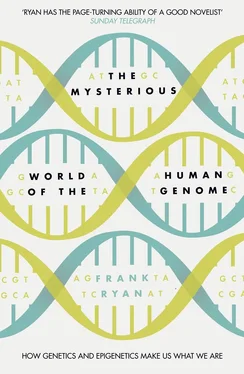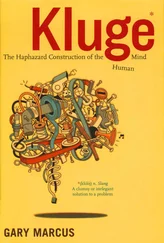When, in due course, Avery returned to work, he switched the emphasis of his research to the ‘transforming substance’. Colin MacLeod improved the techniques of extraction so they could now produce sizeable amounts for assay and further testing. They began to make more rapid progress so that, in a report to the Rockefeller Board for the year 1940–41, they were more confident in stating that even a highly purified extract of the transforming substance appeared to be protein-free.
That summer MacLeod left the Institute to become Professor of Bacteriology at the New York University School of Medicine. But he still took an interest in the project and frequently returned to the Institute to add his advice. A young paediatrician, Maclyn McCarty, took MacLeod’s place in the transforming experiment. McCarty brought a useful level of biochemical training to the laboratory. And now they had the transforming substance in quantity and in stable form, he applied his chemical skills to further process and identify the active material. He began to culture the pneumococci in large batches of 50 to 75 litres, developing a series of steps that increased the yield of transforming substance while removing proteins, polysaccharides and ribonucleic acid. The prevailing beliefs about the hereditary principle claimed that nucleoproteins were the answer. Thus the topmost priority in all of this effort was to ensure that the final test material contained no protein.
By now McCarty had extracted concentrated solutions of the active material. He treated this with a series of protein-digesting enzymes, such as the gut-derived trypsin and chymotrypsin, which were known to destroy proteins, ribonucleic acid and pneumococcal capsular polysaccharide. What remained was once more shaken with chloroform in a final effort to remove even the finest traces of protein.
By late 1942, after repeated extraction and experiment, McCarty had come to the conclusion that the transforming activity was confined to a highly viscous fraction that consisted almost exclusively of polymerised deoxyribonucleic acid. When he precipitated this fraction in a flask by adding absolute ethyl alcohol, drop by drop, all the while stirring the solution with a glass rod, the active material separated out of the solution in the form of long, white and extremely fine fibrous strands that wound themselves around the stirring rod. Dubos would recall the excitement felt within the lab by all those who witnessed the sight of the beautiful fibres, which were the pure form of the transforming substance.
In early 1943, Avery, MacLeod and McCarty presented their findings to distinguished chemists at the Princeton section of the Rockefeller Institute for Medical Research. The chemists must have been astonished, perhaps even nonplussed, but they offered no contradiction of the evidence nor asked for further proof. The researchers summed up the evidence for the Board of the Rockefeller in April of that year. Avery, MacLeod and McCarty, all three medical doctors rather than geneticists, were now ready to inform the world in a paper submitted to the Journal of Experimental Medicine in November the same year, which would be published early the following year. The title of the paper was long-winded and cautious: ‘Studies on the chemical nature of the substance inducing transformation of pneumococcal types. Induction of transformation by a desoxyribonucleic acid fraction isolated from pneumococcus type III’.
In the words of Dubos, this paper ‘had staggering implications’. The sense of excitement, tempered by caution, was captured in a letter that Avery wrote to his brother, Roy, dated 26 May 1943:
… For the past two years, first with MacLeod and now with Dr McCarty, I have been trying to find out what is the chemical nature of the substance in the bacterial extracts which induces this specific change … Some job – and full of heartaches and heartbreaks. But at last perhaps we have it … In short, the substance … conforms very closely to the theoretical values of pure desoxyribose nucleic acid. Who could have guessed it?
In the letter, ‘desoxyribose nucleic acid’, in the paper, ‘desoxyribonucleic acid’: these are older names for what we now call deoxyribonucleic acid – commonly reduced to its acronym, DNA.
two
DNA Is Confirmed as the Code
Looking back at his own failure to appreciate Avery’s discovery at the time, Stent came to the conclusion ‘in some respects Avery et al’s paper is a more dramatic example of prematurity than Mendel’s’.
UTI DEICHMANN
Scientists, in the opinion of the Nobel Prize-winning Linus Pauling, were fortunate because their world was so much the richer for its mysteries than those not interested in science could possibly appreciate. Certainly in those days Avery’s lab at the Rockefeller Medical Institute for Research was filled with a mood of expectation and excitement. In 1943 Oswald Avery was 65 years old. He had planned to retire and join his brother Roy’s family in Nashville, Tennessee, but there was no question of his leaving the lab at this time. He needed to continue his work on the transforming substance. In particular he needed to convince his colleagues throughout the world of microbiology and, more widely, the sceptical world of biochemists and geneticists, of the validity of their discovery.
Avery was conservative by nature. A generation earlier he and a colleague had proposed that complex sugar molecules, called polysaccharides, and not proteins determined the immunological differences between different types of pneumococcal bacteria. Although this theory was eventually confirmed to be true, at the time of discovery it provoked a storm of controversy that had haunted this nervous and sensitive man. In a long and rambling letter to his brother Avery had repeatedly referred to his worry about the reaction to the new discovery. ‘It’s hazardous to go off half-cocked … It’s lots of fun to blow bubbles – but it’s wiser to prick them yourself before someone else tries to.’
Avery had an adversary closer to home. Alfred E. Mirsky, a distinguished biochemist and geneticist also working at the Rockefeller Institute, had reacted to Avery’s discovery with incredulity. To make matters worse, Mirsky was widely regarded as an expert on DNA. He had discovered that the quantity of DNA in every cell nucleus remained the same, establishing a principle called ‘DNA constancy’. He now doubted the efficacy of McCarty’s DNA extraction. A stickler for ‘clean’ biochemical experiment, Mirsky believed that protein found in the nucleus, called nucleoprotein, must be the basis of heredity. Even as late as 1946, Mirsky insisted that the two enzymes McCarty had used in his extractions would not digest away all of the protein. Mirsky was very influential in genetic circles and his argument impressed the leading geneticist of the time, Hermann J. Muller, who had been awarded the Nobel Prize that same year for his discovery, made two decades earlier, that X-rays caused mutations in the genes of the fruit fly. In a letter to a geneticist colleague, Muller stated ‘Avery’s so-called nucleic acid is probably nucleoprotein after all, with the protein too tightly bound to be detected by ordinary method.’
To some extent such disagreement was typical of the situation one might find anywhere in science when various groups from different scientific backgrounds are investigating a major unknown. Never is the argument more acrimonious than when a new discovery confounds the accepted paradigm. But the vociferous opposition of Mirsky from within Avery’s home research foundation must have been particularly damaging. In 1947 Muller published his ‘Pilgrim’s Lecture’ as a scientific paper in which he concluded that whether nucleic acid or protein was the answer ‘must as yet be regarded as an open question’. In the words of Robert Olby, a historian and philosopher of science, ‘Through Muller’s widely read Pilgrim Lecture, this [sceptical] influence was spread to a wide audience.’
Читать дальше












